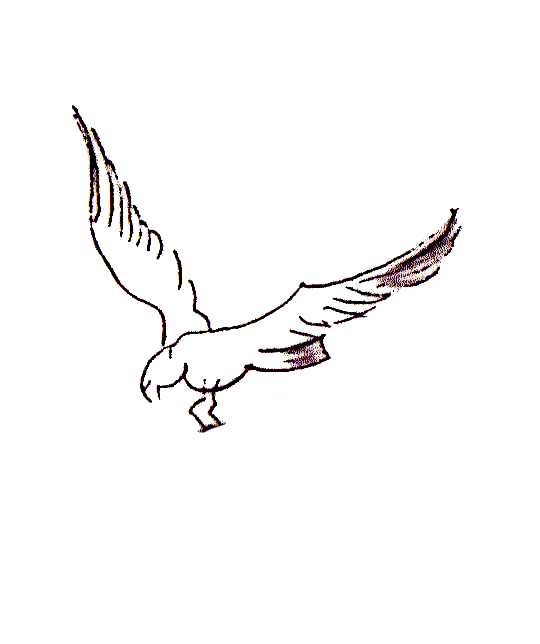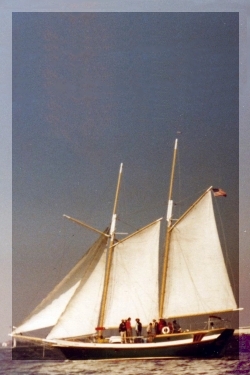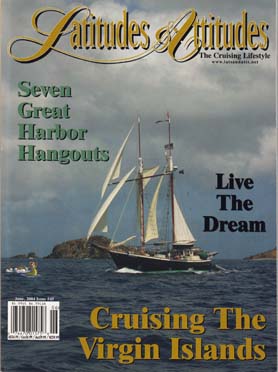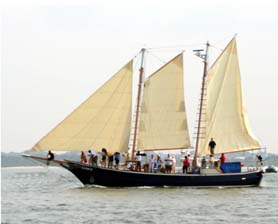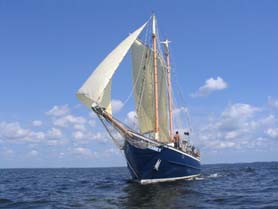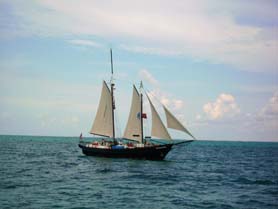With fuel costs continally on the rise, many commercial operators
are now taking a hard look at the economics of sail power. The Trade Rover design is the result of extensive research into the solution for
extracting power from the wind.
In developing the scantlings, which are based on ABS rules for vessels under 61 meters, special emphasis has been placed on shapes and weldments for ease of construction and corrosion prevention, to reduce both initial and long-term costs.
Construction is single-chine, hidden below the waterline, except aft
where it breaks at the quarters to form a ship-type stern. Modifications
to the stern are possible if more deck space is needed.
Stability analysis on the design has been done using various computer programs to obtain optimum ballast/loading conditions. Ballast is either scrap iron and concrete poured into the box keel, or a combination of fixed ballast and sea water in ballast tanks, depending on type of service.
For coastal freighting, where minimum draft is a requirement, ballast water is taken on when sailing without cargo, giving the vessel a draft of 5'3"; with cargo aboard, ballast water is pumped off to maintain a 6-foot draft.
The layout has been developed with a husband and wife team in mind, operating the vessel and living in the aft quarters. Should the
ship's business require extra hands, they are quartered before the
mast and given their own head, shower, and small galley.
The gaff topsail schooner rig can be shortened down quickly by taking in sails rather than reefing, and will still remain in balance. She points well, and the squares'l provides the necessary off-wind sail area easily controlled by two braces. All masts and spars are 6061T6 aluminum tubing, easing handling due to the light weight of aluminum and minimizing maintenance.
The full set of building plans, which have been Coast Guard approved, consists of topsail and bald headed rig profile, deck plan, inboard profile, frame details at each station, tank piping and ballast plan, spar and rigging details, keel/stem layout, steering, engine, and exhaust details. The lines have been computer faired to 1/100th of an inch, eliminating lofting.
<top>
